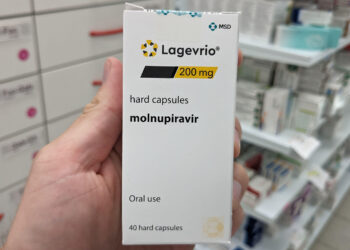TOPLINE:
A systematic review spanning two decades and 538 publications found that stereotactic radiosurgery demonstrated a median radiographic control rate of 82% in patients with metastatic brain tumors and a control rate of 91% to 93% in those with benign tumors, including meningiomas and vestibular schwannomas.
METHODOLOGY:
- Stereotactic radiosurgery is a minimally invasive technique delivering high-dose radiation to precise targets. There has been growing recognition of its utility since 2000; however, its use both in the United States and globally for brain tumors remains under-documented.
- Researchers conducted a systematic literature review of 538 articles that included 120,756 patients in the United States and globally who underwent stereotactic radiosurgery for brain cancer and tumors between 2000 and 2023.
- Overall, metastatic tumors represented 58.2% of cases, followed by skull base tumors (34.4%) and gliomas (7.4%).
- Most studies included were case series (29.2%) or cohort studies (42.6%); the analysis also included randomized controlled (4.5%) and nonrandomized trials (5.6%).
TAKEAWAY:
- In patients with metastatic brain tumors, stereotactic radiosurgery achieved a median radiographic control rate of 82%, with a median complication rate of 11%. The median progression-free survival was 7 months, and the median overall survival was 11 months.
- Of skull base tumors, vestibular schwannomas were the most commonly treated. The radiographic control rate for these cases was 93%, with a 19% complication rate. The median progression-free survival was 9 months, and the median overall survival was 42 months.
- In gliomas, stereotactic radiosurgery achieved a radiographic control rate of 65%, with a complication rate of 19%. The median progression-free survival was 7 months, and the median overall survival was 13 months.
- The number of studies exploring stereotactic radiosurgery for brain tumors increased over time from 2000 to 2023 (including in low-income countries from 2018 to 2023). Outside the United States, Japan, Germany, Italy, France, and Canada published the most studies on this topic.
IN PRACTICE:
“The findings highlight the significant role of [stereotactic radiosurgery] in the multidisciplinary treatment of brain tumors and its contributions to improving patient outcomes,” the authors wrote. “Large-scale, multicenter studies are needed to validate current findings, explore long-term outcomes, and provide a more nuanced understanding of the clinical and quality-of-life impacts of [stereotactic radiosurgery] across diverse settings.”
SOURCE:
This study was led by Zerubbabel K. Asfaw, Icahn School of Medicine at Mount Sinai, New York City, and was published online in Cancer Medicine.
LIMITATIONS:
This study included only articles published after 2000 and excluded non-English language articles, which could limit global representation. Differences in study design and reporting standards across countries could affect data comparisons.
DISCLOSURES:
Asfaw received support from the National Center for Advancing Translational Sciences Training Core grant. One author reported having a consulting role with Brainlab and Integra. The other authors reported no conflicts of interest.
This article was created using several editorial tools, including AI, as part of the process. Human editors reviewed this content before publication.
Source link : https://www.medscape.com/viewarticle/minimally-invasive-technique-offers-strong-local-control-2025a100080s?src=rss
Author :
Publish date : 2025-04-03 09:07:00
Copyright for syndicated content belongs to the linked Source.













